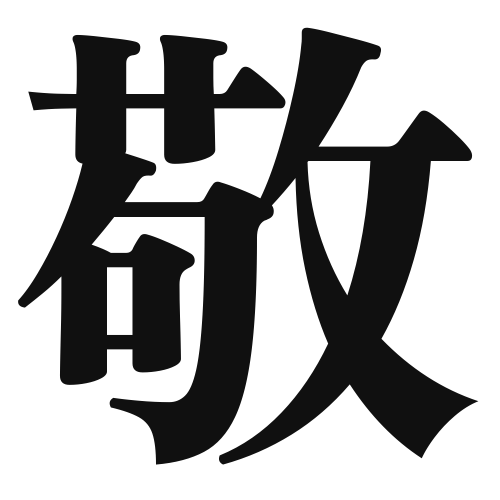1. Overview of Meaning
The kanji “敬” (kei) means “respect” or “reverence.” It conveys a sense of honoring others and showing politeness in interactions.
2. Formation and Radical
Formation of the Kanji: The kanji “敬” is a compound character, which means it is formed by combining different elements. It consists of the radical “心” (kokoro), which means “heart,” and the phonetic component “敬” itself, which suggests the meaning of respect.
Radical: The radical of “敬” is “心” (heart), indicating that the concept of respect is deeply connected to feelings and emotions.
3. Examples of Usage
Common Words and Phrases: Some frequently used words that include “敬” are “敬語” (keigo – honorific language) and “敬愛” (keiai – love and respect).
Example Sentences in Daily Conversation:
- 彼はいつも敬語を使って話します。 (He always speaks using honorific language.)
- 私たちは彼女を敬愛しています。 (We respect and love her.)
4. Synonyms and Antonyms
Similar Kanji: A similar kanji is “尊” (son), which also means “to respect” but often carries a connotation of valuing someone’s status or dignity more highly.
Opposite Kanji: The opposite of “敬” is “侮” (bu), which means “to despise” or “to scorn,” indicating a lack of respect.
5. Cultural and Historical Background
Relation to Japanese Culture: In Japanese culture, respect is a fundamental value, deeply embedded in social interactions and communication. The use of “敬語” (keigo) is a reflection of this cultural emphasis on respect.
Proverbs and Idioms: One common saying is “敬老の日” (Keirō no Hi – Respect for the Aged Day), which is a national holiday in Japan dedicated to honoring the elderly and showing appreciation for their contributions to society.
